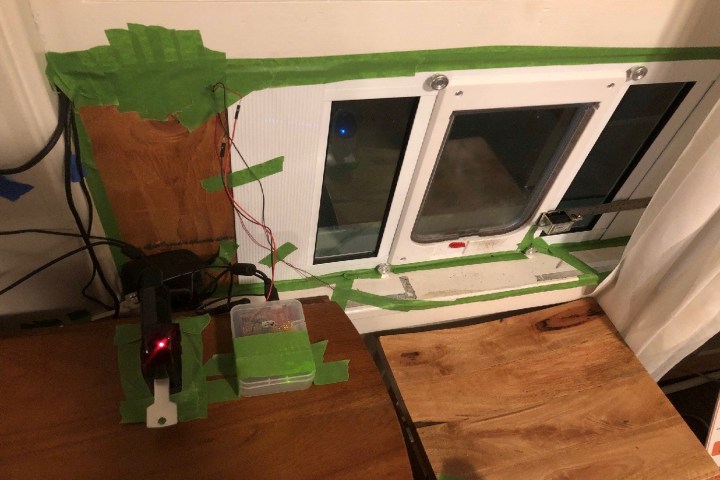
How do you stop your beloved pet cat catching and murdering innocent wildlife, then bringing it into your home in the middle of the night and waking you up? There’s plenty of advice out there, ranging from getting sweet little Figaro a collar with a bell, to disincentivizing the act by quickly disposing of dead critters without making a fuss. Of course, if you’re a technically minded Amazon employee, there’s another option too: You rig up your cat flap to an A.I.-enabled camera and Arduino-powered smart locking system. You know, the good, old fashioned way.
That’s exactly what Amazon product manager Ben Hamm did recently, after reaching the end of his tether with cute-yet-murderous cat Metric. To create the door locking mechanism, Hamm affixed an Arduino to an electromagnetic bolt that he attached to the cat door. He also set up a camera using Amazon’s AWS DeepLens, a programmable video camera which can run deep learning models locally and take action according to what it sees. He then set about coding his solution using programming language Python and Amazon SageMaker, a managed cloud service that enables developers to build, train, and deploy machine learning models.
“The most important part of training machine learning software is getting your hands on enough data,” Hamm told Digital Trends. “First I programmed my camera just to capture images every time it detected movement, and then I spent months labeling over 23,000 images. As the most important data — Metric bringing in prey — happened unpredictably, this took time. If my camera failed when Metric brought in a rat, I would get disappointed. You start to get very greedy for quality data! Once I had the data nice and labeled, I fed it into Amazon SageMaker to create image classification models.”
The finished system means that, when Hamm’s camera detects Metric trying to bring in prey, it sends a USB signal that locks the door. (Because DeepLens does its processing locally, this will work even if Hamm’s internet goes down.) The cat flap remains locked for a quarter hour, and Hamm is sent a text message. He also set it up so that it sends a “blood money” donation to the National Audubon Society, which protects birds.
As to whether he plans to commercialize the technology, Hamm remains unsure. “The finished product is currently installed over the window of my cottage,” he said. “I was not planning on commercializing it, but the outpouring of desperate cat owners has definitely been interesting!”


